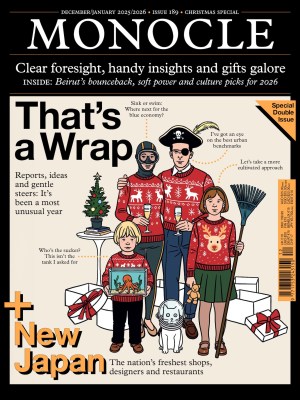Entrepreneurs to watch: the forward-thinkers making new paths in Mexican industries
From independent craft brewers to clean-mobility pioneers
1.
Roberto Rocha and Germán Losada
Co-founders,Vemo, Mexico City
“The first time that we met one of our investors, he said, ‘You either have the best electric-mobility model that I have ever seen or you’re totally crazy,” says Roberto Rocha, Vemo’s co-founder and CEO, sitting in a ninth-floor office in Mexico City’s Polanco neighbourhood. If the past few years are anything to go by – Vemo recently raised $63m (€56m) for further expansion – it’s safe to say that the company falls into the former category. “We have proven that we have the winning formula for a market such as Mexico,” says Rocha.

Opposite him sits Germán Losada, his Argentine co-founder and chairman. The former investment bankers founded their mobility start-up in 2021. Noticing that the take-up of electric vehicles (EVs) in Mexico was low, they hit upon their clean-mobility idea. A core part of their business is an EV lease-to-buy programme called Vemo Impulso for ride-hailing drivers who can’t afford to buy cars right away. “We provide leasing to people who are typically not taken care of by the traditional banks because they don’t have good credit histories,” says Rocha.
Vemo, which partners with ride-hailing platforms Didi and Uber, has had to create both the supply and the demand, since little infrastructure existed before its arrival. It has been developing an extensive EV-charging network across the country and paying 1,600 ride-hailing drivers fixed salaries to work two shifts per day in its cars through its Vemo Conduce arm. “In the absence of [state] subsidies, for the economics to work, we required significant utilisation,” says Losada. A third string in Vemo’s bow is operating EV fleets for businesses.
Vemo’s lease-to-own venture is now operating in five Mexican cities, while the rest of the business also expands. “Today we have the country’s largest public charging network,” says Losada. “And in terms of charging sessions, we’re the largest in Latin America.” Mexican sales of fully electric vehicles in the first four months of 2025 almost tripled year on year and Vemo sees opportunities in other Latin American nations. “We have a unique business model that’s proven to work,” says Losada.
vemovilidad.com
Steps to success
1. Build an ecosystem: Vemo realised that it needed to grow both supply and demand – and set about doing so.
2. Corner the market: It moved in an aggressive way at the beginning, acquiring four companies in the first three months.
3. Be cost efficient: The company has explored working with US EV brands but the economics don’t work for now – hence the use of Chinese models.
2.
Adrián Marfil and Juan Manuel García
Co-founders, Los Patrones, Monterrey
Furniture brand Los Patrones has been tapping the domestic market for what it does best: metal. Founded in 2015 by Adrián Marfil and Juan Manuel García, it is continually evolving. In 2021, for example, the company took control of its production process. Los Patrones has become a benchmark for metal-furniture excellence in Mexico and is eyeing expansion both at home and abroad.

Monterrey is an industrial city. How did you harness its manufacturing side?
Adrián Marfil: Most of the materials that we use are metal, which is produced here. We have taken advantage of our geographical situation.
How did you end up taking over your factory?
Juan Manuel García: At the beginning, our provider was my father’s company. In that post-pandemic period of sluggishness, he suggested that we absorb it, along with all of the employees.
How are you evolving?
AM: We’re developing stainless steel for gardens and swimming pools, which would allow us to work better with hotels and other big projects. Then we want to look at e-commerce and retail sales.
Do you see yourselves as entrepreneurs?
JMG: We saw an opportunity and we took it – the perfect definition of entrepreneurship. The factory is part of the muscle but the heart and soul of the brand is the design.
lospatrones.mx
3.
Maye Ruiz
Founder, Maye, San Miguel de Allende
When interior designer Maye Ruiz moved from Mexico City to the town of San Miguel de Allende in her home state of Guanajuato, she was initially concerned that being away from the epicentre of art and design would hinder her career. But the move – which was prompted by her desire to be with her husband, Daniel Valero, the founder of artisan-focused studio Mestiz – gave her the chance to get out of the CDMX bubble. “It is really refreshing,” she says.

In 2021, Ruiz established design studio Maye, which unabashedly embraces bold colours. “What matters most is working with people who bring a unique sensitivity and a strong creative drive,” she says. Her workplace, on a cobbled street near the centre of town, exemplifies her distinctive style. Visitors enter through a primary-blue steel door into a tranquil courtyard, where windows are framed in the same vivid hue. The bathroom and kitchen, meanwhile, are lined with ruby-red tiles.
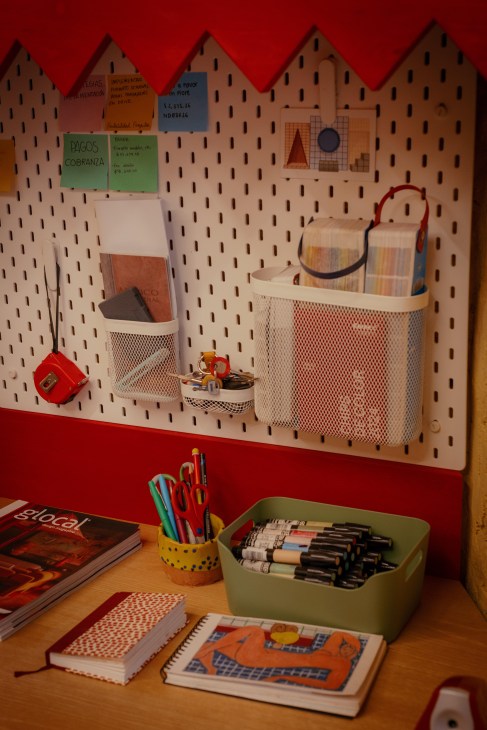
“My style works really well in San Miguel de Allende,” says Ruiz. Many of her clients own multiple residences worldwide, which makes them more adventurous in their design choices. “They’re bold about colour here,” says Ruiz. Because the city is famously vibrant, with streets fringed with houses in shades of peach and pink, it’s easy to break away from beige.
Beyond residential projects, Ruiz has ventured into commercial design. Notably, she collaborated with her husband on the restaurant at Casa Arca hotel in San Miguel de Allende. Located in the historic Casa Cohen, it features Ruiz’s playful décor, including large woven lampshades.
Having firmly established herself in the city, Ruiz now aims to grow and diversify her business beyond Mexico and expand into product development. “We are always looking to partner with people and brands that share our vision and push us creatively,” she says. But she has no intention of straying from her new base. “Mexico City is such a vibrant city with so many things to do but it can also be really distracting,” she says. Being in San Miguel de Allende presents a unique opportunity to grow her practice. “It’s a place where you can focus on your business.”
maye.mx
4.
Luis González and Ana Holschneider
Founders, Cervecería Hercules and Caralarga, Querétaro
“I’m restless and have my own ideas,” says Luis González, the co-founder of Hércules brewery, a glass of sour beer in hand. His wife, Ana Holschneider, who is sitting beside him at a beer-garden table in Santiago de Querétaro, agrees. “He’s always talking about the next project,” she says. González and Holschneider, who met in Mexico City and have four children, are entrepreneurs in every sense – even though Holschneider says that they established their careers “without knowing it” and González confesses that he has never put together a business plan. It all started 14 years ago when, after a stint in Hong Kong, the couple moved to Santiago de Querétaro to take over part of a half-abandoned textile factory that belonged to González’s family.
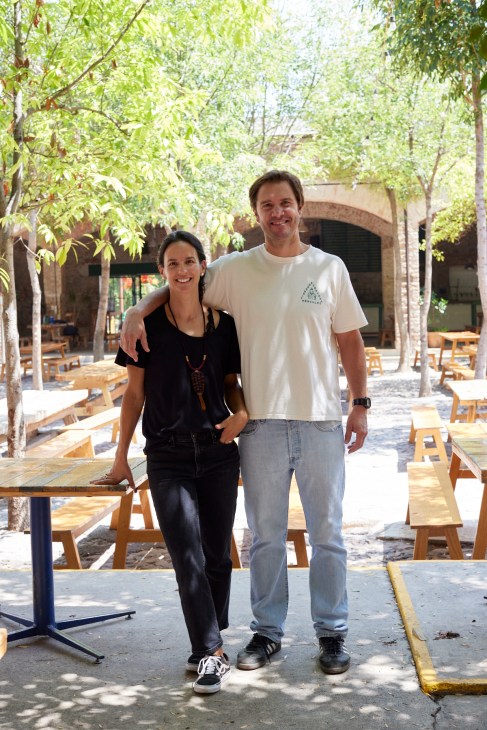
Eyeing the beautiful factory buildings dating back to 1846 – as well as the grand hacienda attached to it – González saw potential and undertook an impressive renovation project with his twin brother, Carlos. The first step was to establish Cervecería Hércules, an independent craft brewery in a country dominated by big groups. “We saw the chance to make a quality beer in Mexico with profound brewing values,” he says.
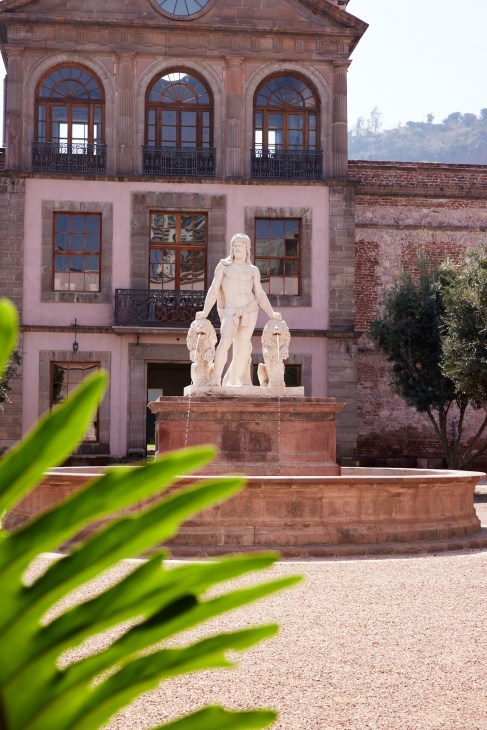
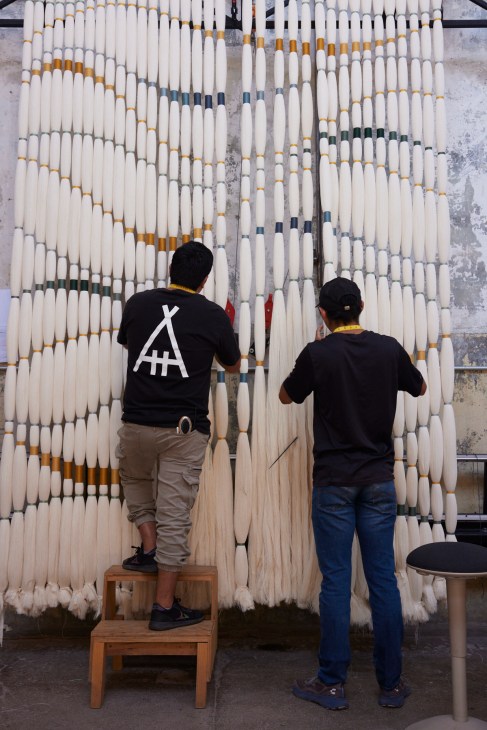
In step with González, Holschneider started a design studio called Caralarga, influenced
by pre-Hispanic Mexico. Having previously experimented with silk and pearls, she hit upon the idea of using the threads from the Querétaro textile factory. “I walked around the factory and saw the leftovers, which looked like queso Oaxaca [a stringy cheese],” she says. “I said, ‘If we can make jewellery from this thread, it will be spectacular.’”
The couple have come a long way. Caralarga, which employs 50 people, has moved into making large wall-hangings for collectors and interior designers across the globe. Cervecería Hércules, meanwhile, has invested in expanding its capacity. Alongside the two brewery bars – and organising concerts, film screenings and dance classes at the Hércules site – it has opened a beer hall in Santiago de Querétaro, as well as a restaurant and a shop in Mexico City. “We don’t want to open something just to open it,” say González.
The latest piece of the puzzle has been Hotel Hércules, which launched in July 2023 in the former hacienda. It has 40 rooms with a mid-century aesthetic and wall hangings from Caralarga. Holschneider and González aren’t finished yet. “I never thought that all of this would happen to me,” says Holschneider.
almacenhercules.mx; caralarga.com.mx
Steps to success
1. Give back: Former textile workers and residents get discounts on beer.
2. Deliver something fresh: Querétaro previously lacked a gathering space that offered so much. Identify local needs.
3. Have the right people: Holschneider’s business partner, Ariadna García, and artisan María del Socorro Gasca are key, as are Udo Muchow (García’s partner), friend Santiago Migoya and brother Carlos for González.
Five more entrepreneurs to watch
1. Juan José Gutiérrez
CEO, Jelp Delivery, Tijuana: Logistics solutions software for last-mile delivery.
2. Montserrat Messeguer
CEO, Montserrat Messeguer, Mexico City: Making boots inspired by the north of Mexico since 2017.
3. Mario Ballesteros
Founder, Ballista, San Miguel de Allende: Curator and former magazine editor Ballesteros runs a platform for art and homeware.
4. José García Torres
Investor, Mérida: The gallerist is an investor in Mérida ventures Salón Gallos and Pizza Neo.
5. Laura Noriega
Founder, Tributo, Guadalajara: Design company from Jalisco’s capital that uses artisans from across the country.
Read more from Monocle’s 2025 Mexico Survey:
- Inside Mexico’s creative gold rush: four high-growth industries to watch
- Three game-changing developments about to transform Mexico City
- Eight ideas for Mexican businesses that are ripe for the taking
- Meet the self-starters behind the clever hospitality boom in Oaxaca City
- The entrepreneurial trailblazers revitalising Guadalajara’s art scene
- Oaxaca Aerospace’s Mexican-built plane has beaten the odds and is ready for takeoff


